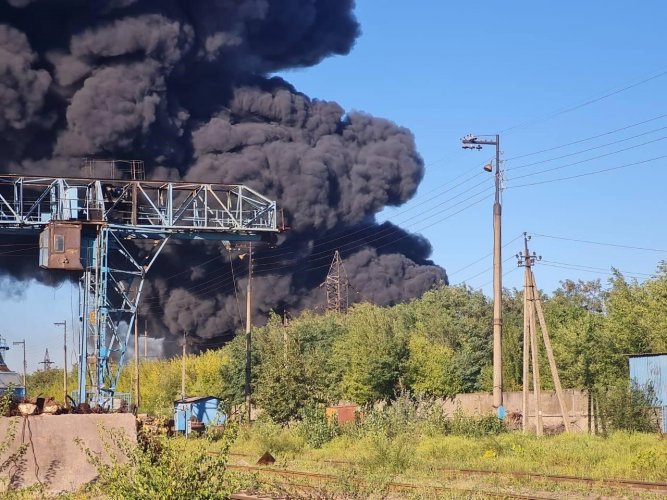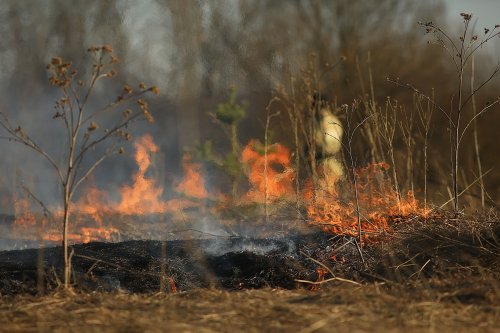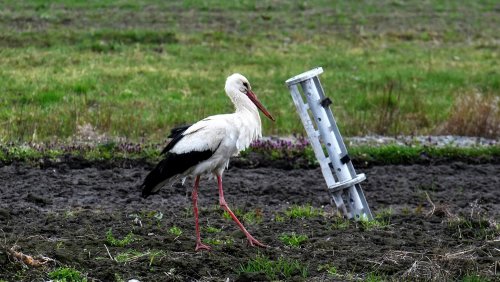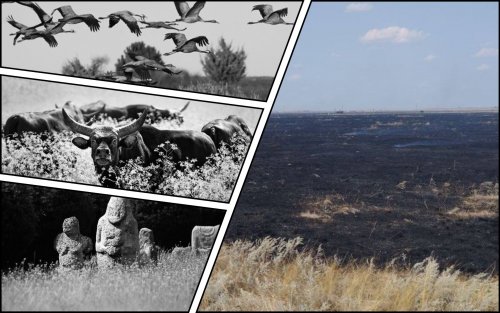At a meeting with Swedish Ambassador Tobias Tyberg, the Minister of Environmental Protection and Natural Resources Ruslan Strilets said that the war is an obstacle for the green European movement of Ukraine.
The team of the Ministry of Environment continues to document the damage to nature from Russian aggression, and on September 2, the Methodology that will allow calculating the damage to water resources caused by military actions came into force, reports Ministry of Environment.
Since February 24, eco-inspectors have conducted 232 trips to the sites of crimes against the environment and taken 198 soil samples throughout the country.
Threats to nuclear and radiation safety
As of September 7, 2022, the Zaporizhzhia NPP operates with the risk of violating radiation and fire safety standards.
The IAEA highlights that since the Russians captured the power plant in March, all 7 indispensable pillars for ensuring nuclear safety have been significantly violated:
- physical integrity of the facilities has not been maintained;
- safety and security systems not fully functional;
- difficult operating conditions for personnel;
- damage to off-site power supply;
- complications to logistical chains;
- problems with radiation monitoring systems and emergency preparedness;
- problems in communications with the regulator
The IAEA mission confirmed the deployment of Russian military equipment and soldiers at the station.
Attacks on infrastructure and industrial facilities
1st of September:
- shelled Energodar in the Zaporizhzhia region; as a result of the attack, an industrial facility of an enterprise caught fire;
- shelled the village of Pechenygi, the Kharkiv region, with Grad MPLS, damaging the infrastructure;
- shelled an aviation enterprise in Kharkiv resulting in damages to several premises.
On September 2, rocket attacks on Kharkiv damaged the premises.
September 3:
- Russians hit a food factory in Kramatorsk and a textile industry enterprise, causing a fire. In Slovyansk, the occupiers shelled two enterprises;
- 5 Russian missiles were shot down in the Dnipropetrovsk region; the missile debris on the ground caused 4 fires in several communities.
September 4:
- shelled a grain elevator warehouse in Voznesensk, the Mykolaiv region, causing a fire;
- destroyed an elevator in Ochakiv, the Mykolaiv region, destroying several thousand tons of grain;
- launched a large-scale rocket attack on Mykolaiv, destroying civilian infrastructure objects.
September 5:
- attacked an oil depot in the Karpivska community of the Kryvyi Rih district. A severe fire destroyed the fuel reserves;
- shelled the Nikopol district of the Dnipropetrovsk region, damaging 9 infrastructure facilities;
- damaged an industrial enterprise in Mykolaiv by rocket shelling;
- damaged industrial and production facilities in the villages of the Izyum, Chuhuiv, Kharkiv, and Bogoduhiv districts, causing fires.
September 6:
- launched a rocket attack on an oil depot in Kryvyi Rih, which caused a large-scale fire. It took 16 hours to extinguish the fire;
- destroyed a farm’s grain warehouse in the Bashtanska community of the Mykolaiv region;
- damaged an industrial enterprise in the Komyshuvaska community of the Zaporizhzhia region.
On September 7, because of a missile attack, a production building burned down in the Nemyshlyanskyi district of Kharkiv. Russian troops also shelled an industrial enterprise in the Marganets community of the Dnipropetrovsk region.
"Large-scale fires at infrastructure and industrial facilities lead to air poisoning with particularly dangerous substances. Winds can carry pollutants over long distances," the article explained.
Eco-inspectors calculated 6.8 million hryvnias of damage to the environment from the damage to a container with a urea-ammonia mixture and 6 tanks in which almost 155 tons of diesel fuel were stored in the territory of the village of Dubovyazunka, Konotop district, Sumy region. The shelling, which took place at the end of March 2022, caused a large-scale fire. Oil products and liquid nitrogen fertilizer got on the ground and polluted it.
Pollution directly caused by hostilities
According to the State Emergency Service, as a result of the full-scale invasion of the Russian Federation, almost half of the territory of Ukraine was contaminated with mines and explosive objects. As of now, sappers have reduced the potentially dangerous area from 300,000 square kilometers to 185,000 square kilometers. However, the situation is complicated by the constant shelling of territories in the Donetsk, Dnipropetrovsk, Zaporizhzhia, Kharkiv, Odesa, Sumy, and Mykolaiv regions.
"Another serious issue is the contamination of rivers and water reservoirs of Ukraine, coastal waters of the Azov and Black Seas, hydro-technical structures, and seaports with mines and explosive objects. The total area of water areas of Ukraine potentially contaminated with explosive objects is about 16,000 square kilometers," the message informs.
Since February 24, 2022, 192,230 explosive items, including 2,106 aerial bombs, have been removed and neutralized.
On September 3, Russian troops attacked the village of Bezruky, the Dergachivska community, in the Kharkiv region, with phosphorus shells. As a result, more than 16 houses were completely burned down. Weapons containing white phosphorus are prohibited under international law and cause significant damage to human health and the environment.
Pity the nature reserves and protected ecosystems
A significant part of Ukrainian forests remains mined. On September 2, foresters blew up a mine in Zhytomyr Oblast.
Forest fires continue to occur due to military operations. On September 2, the occupiers shelled the Velikomykhailiv community of the Dnipropetrovsk region. As a result of the attack, a fire broke out in the forest, burning 4 hectares.
On September 2, shelling caused a forest fire in the Krasnopil community of the Sumy region, and the fire spread to the Russian positions.
On September 3, the occupiers shelled the territory of the Great Meadow National Nature Park in the Zaporizhzhia region. The attack caused fires on the islands of Mali and Velyki Kuchugury in the Kakhovske water reservoir. The park is of national importance as a home to protected birds’ nesting places and rare plant habitats.
The article noted that Europe will support Ukraine in restoring forests.
Damage to water resources
In the sub-basin of the Siverskyi Donets River in August 2022, the presence of oil products was detected in the water, which was not recorded in previous years. The increased concentration of ammonium nitrogen and the presence of oil products is due to the inefficient operation of treatment facilities and military operations in the region. Pesticides, polyaromatic hydrocarbons, volatile organic compounds and heavy metals were also found in the water. The presence of petroleum products in the water (within the regulatory limits) was also detected, which had not been recorded before.
Black and Azov seas
On September 7, the Odesa Regional Prosecutor's Office reported it had started criminal proceedings under Article 441 of the Criminal Code of Ukraine on ecocide due to the mass death of dolphins due to Russia's armed aggression against Ukraine.
As EcoPolitic reported before, in Kharkiv eco-inspectors calculated 3.18 billion hryvnias in damages the environment from shelling by Russian troops of the park named after Gorky, which happened on August 9, 2022.





